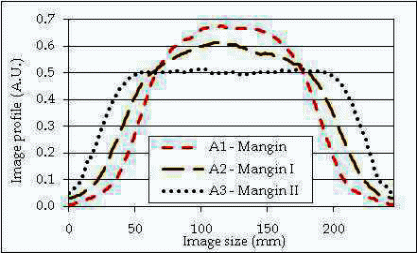According to Sansoni et al., coupling of solar cells with optical fibres to collect sunlight energy for photovoltaic power generation with the possibility of optimizing the energy generated from the cells to illuminate the interiors of buildings either directly or indirectly has been investigated for a long time(1). The studies focused on the use of circular shapes and squared photovoltaic (PV) systems. Besides, the design, development, installation and use of solar collectors with optimised and enhanced features have entered into mass production to reduce the cost of production and increase both profits and efficiency.
Savage notes that the design of optical fibre-coupled collectors to harness the sunlight energy creates a modular mechanical and electronic system that consists of optical fibres and solar collectors for sun tracking (2). According to Abdul-Rahman and Wang, fibre, that is made of quartz with extremely low losses for power transportation and sunlight concentration are designed into a system that accumulate and transports sunlight to the focal area for use (2).
Typical examples include single fibres made of quartz, with the optical fibre having a numerical aperture NA=0.48 and a core diameter 0.6mm with a semi-aperture inclined at 28.7°. Besides, several other devices have been developed such as the Parabolic, Cassegrain, and Mangin among other versions.

Sheikh established that the composition of the system includes various devices such as Mangin collectors, Parabolic collectors, and the Conic Cassegrain collector each have unique properties that makes them suitable for their application (4). For instance, the Mangin collectors consist of aluminised rear surfaces, glass meniscus, secondary, and the first spherical mirrors take spherical or flat shapes and have different configurations.
Source Sansoni et al provides the typical characteristics of A1, A2, and A3 Mangin designs are shown in figure 1 (10). A summary of the features based on the θ is the maximum angle of rays include a flat primary spherical primary mirror with EPD=40mm; f=39.76mm, f/#=0.994 (θ=26.7°) for A1, a EPD=52mm, f=48mm, f/#=0.923 (θ=28.44°) of the spherical secondary and primary mirrors for A2, and secondary and primary mirrors with a correction lens inclined at an angle of 0.937 (θ=28.5°, and EPD=62mm, f=58.1mm specifications.
A theoretical exposition to estimate the efficiency and power of collectors could be done by calculating the efficiency of each device in the system. An experiment was conducted to determine the efficiency of 5m quartz fibre of size 0.6mm and NA=0.48 was done using devices having different features. The results showed different characteristics on a wide range of parameters. It includes “the performance of plastic collectors, which was later improved using fibre bundles instead of quartz” (Sansoni et al. 3). The results of the operational efficiency of latter devices using a single fibre with a diameter of 1.5mm improved significantly in collecting sunlight energy when applied on various systems.
Among the “critical applications of the sun tracking system was in the orientation of collectors towards the sun to gather and concentrate the sunlight energy into one area” (Sansoni et al. 4). A typical example consisted of an implementation of a sun tracking system using a double guided system with a functionality enabled on double complementary procedures. The “first method provides preliminary orientation and the second method supports accurate positioning and fine tuning of the sun track system” (Sansoni et al. 4).
The methods rely on rolling motors (consisting of a motorised frame with 1 to 9 tiles and 4 Mangins and 4 Cassegrains) and optical positioning system respectively to achieve a precision at an inclination that is higher than 0.1°. Investigations show that the modularized solar collecting device consists of four concentrators and work well on either the top of a building or on a playground.
A typical example of the application of the innovative system is the internal lighting of a museum (Mani and Pillai 9). The system captures light energy from the sun using photovoltaic panels and converts them to electrical energy (Chow 12). However, empirical evidence shows that the system works better when used to illuminate the inside of buildings (Chow 14). It is suitable for artistic lighting and provides a good source of light for color recognition and rendering because it is possible to achieve the color illuminance restrictions required for artistic work. Besides, the light can be applied by direct illumination of the museum to take advantage of exposed objects for color rendering purposes.
In the museum, illumination was achieved by developing device with electro-mechanical and optical capabilities. However, before the system was installed it was configured and tested using comparative ray tracing analyses. Besides, protection from atmospheric moisture and installation demonstrations were done while ensuring that the cost of production was made as low as possible by replacing glass with plastic components. According to Sansoni et al, the mass production of the Catadioptric Concentrator Monoblock (CCM) was made possible to ensure further cost reductions and a 91% mean value of efficiency was achieved.
Works Cited
Abdul-Rahman, Hamzah, and Chen Wang. “Limitations in current day lighting related solar concentration devices: A critical review.” International Journal of the Physical Sciences 5.18 (2010): 2730-2756. Print.
Chow, Tin Tai. “A review on photovoltaic/thermal hybrid solar technology.” Applied Energy 87.2 (2010): 365-379. Print.
Mani, Monto, and Rohit Pillai. “Impact of dust on solar photovoltaic (PV) performance: Research status, challenges and recommendations.” Renewable and Sustainable Energy Reviews 14.9 (2010): 3124-3131.
Sansoni, Paola, D. Fontani, F. Francini, L. Mercatelli, D. Jafrancesco, E. Sani, and D. Ferruzzi. Internal Lighting by Solar Collectors and Optical Fibers. New York: Open Access Publisher, 2010. Print.
Savage, Paul. Portable hybrid applications for AC/DC load sharing, Washington, DC: U.S. Patent and Trademark Office. 2010. Print.
Sheikh, Munawar A. “ Energy and renewable energy scenario of Pakistan.” Renewable and Sustainable Energy Reviews 14.1 (2010): 354-363. Print.